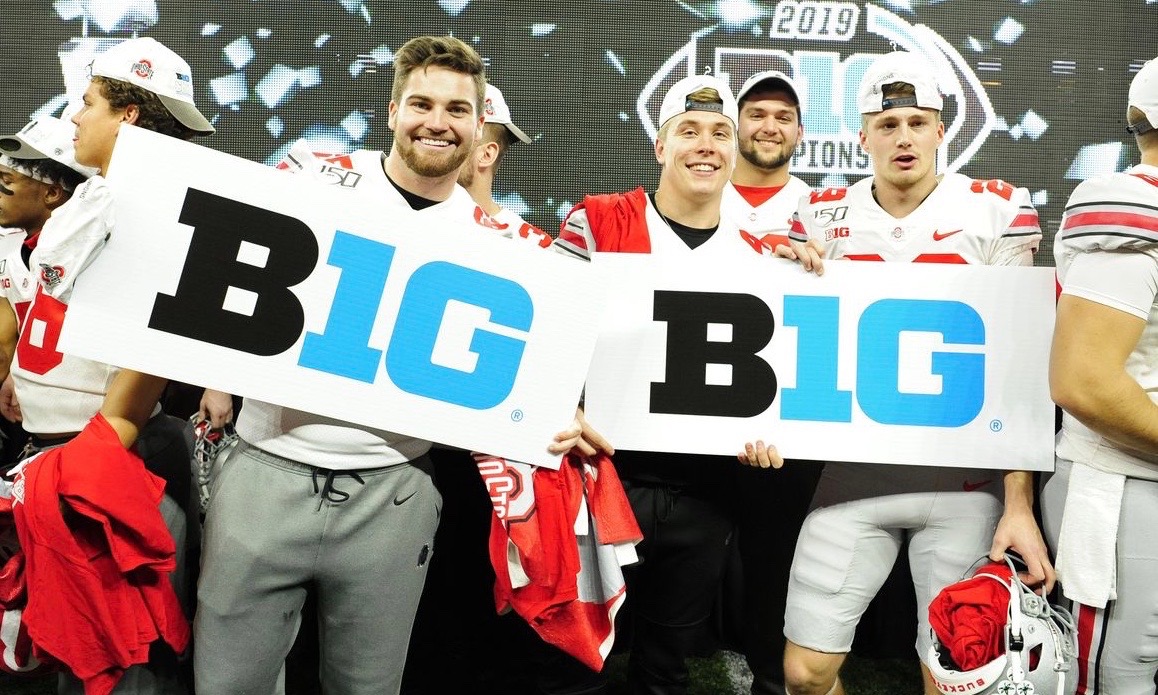The Big Ten became the first Power Five conference to introduce major changes to its 2020 football schedule when it announced its intention to employ a conference-only scheduling model amid the COVID-19 pandemic on Thursday.
“If the Conference is able to participate in fall sports (men’s and women’s cross country, field hockey, football, men’s and women’s soccer, and women’s volleyball) based on medical advice, it will move to Conference-only schedules in those sports,” the Big Ten announced. “By limiting competition to other Big Ten institutions, the Conference will have the greatest flexibility to adjust its own operations throughout the season and make quick decisions in real-time based on the most current evolving medical advice and the fluid nature of the pandemic.”
With the expectation that other conferences will follow suit, fans are trying to figure out what this means for their favorite teams. The Big Ten’s decision will eliminate several major nonconference showdowns, including Ohio State’s trip to Oregon in Week 2 and the interstate rivalry battle between Iowa and Iowa State. Slowly but surely, it’s becoming inevitable that college football is vulnerable to the coronavirus.
The announcement came one day after the Ivy League announced it will not hold intercollegiate athletics in the fall but will reevaluate playing sports beginning Jan. 1, 2021 and Ohio State paused voluntary workouts as a result of an undisclosed number of positive COVID-19 tests.
It remains unknown how Big Ten programs will modify their schedules as a result of the league’s decision. An additional intraleague contest for each team seems to be a probable way to fill out the conference’s schedule, which currently includes nine league games for each team.
Considering the coronavirus pandemic is persisting and in some areas, worsening, the decision serves its purpose in some ways. Moving to the conference-only schedule eliminates many of the logistical issues presented by the pandemic. Not only does it allow for less long-distance travel, but it also gives conferences the opportunity to implement universal testing standards.
However, to me, this is where the NCAA needs to provide guidance. Because conferences aren’t necessarily geographically organized, I don’t see how transitioning to Conference-only schedules does much to mitigate the spread of coronavirus. As an example, Florida St. travels to Syracuse on Nov. 19. It’s a conference game. At that point, the situations with the virus in Tallahassee, FL. and Syracuse, NY could be very different. What if one is a hotspot and the other isn’t? What if there are mandatory quarantines? I don’t know.
What I specifically don’t understand is why the NCAA won’t step in and create schedules based on geography. Forget about conferences. That way, teams don’t have to leave their regions and the college football season itself doesn’t present as much of a risk for spreading the coronavirus. No matter what, this season is going to be an outlier, so why wouldn’t we do everything we can to minimize the risk of spread?
The conference said its conference-only schedule for the fall — sports be permitted to play — will be announced at a later date.




